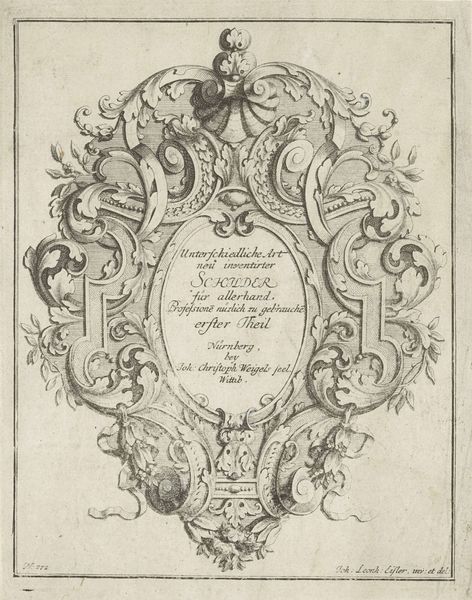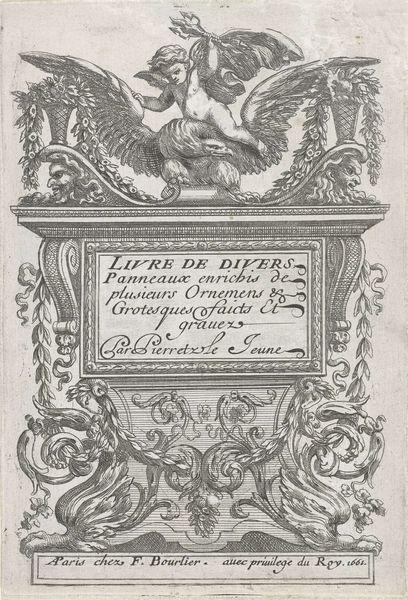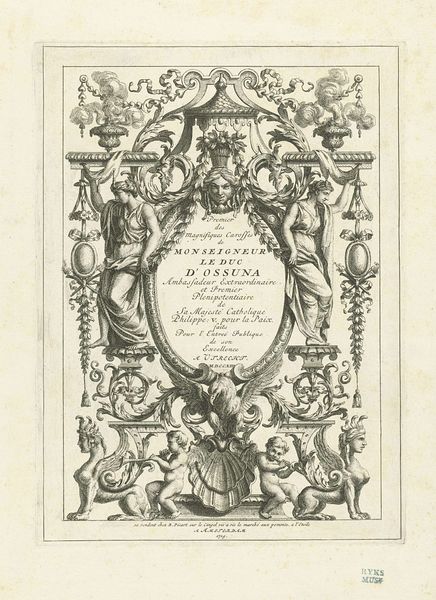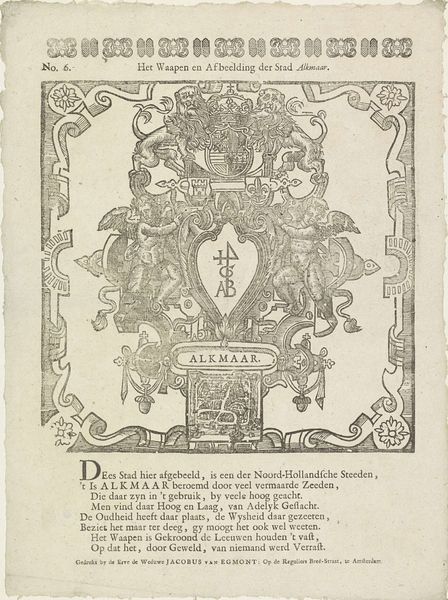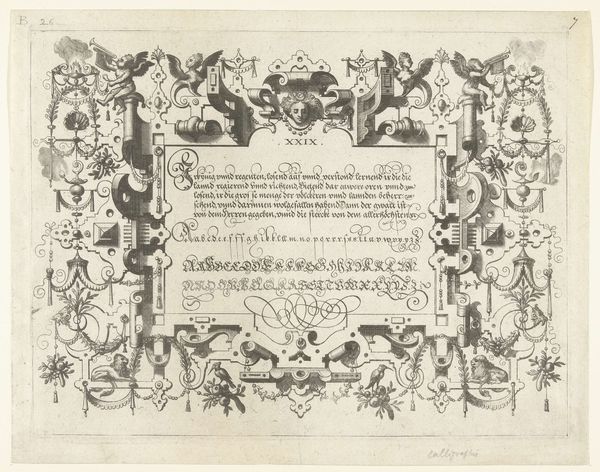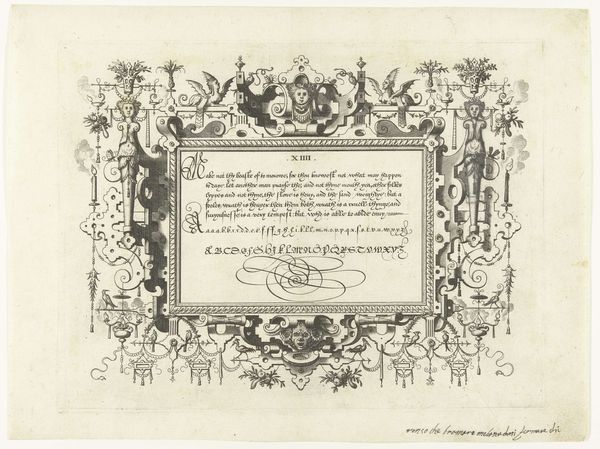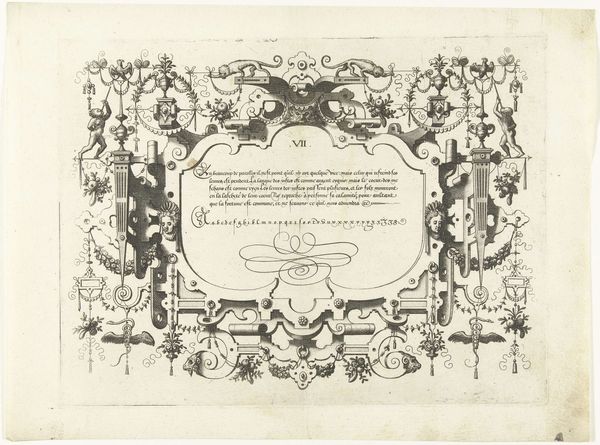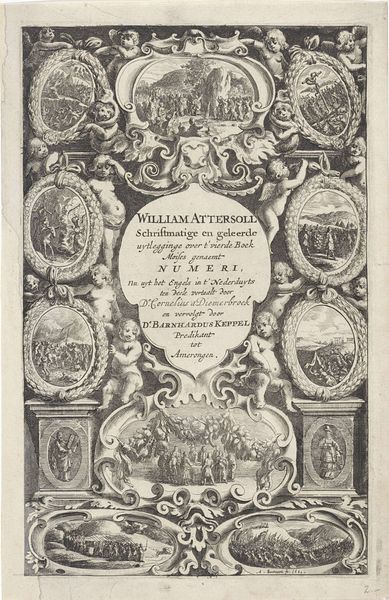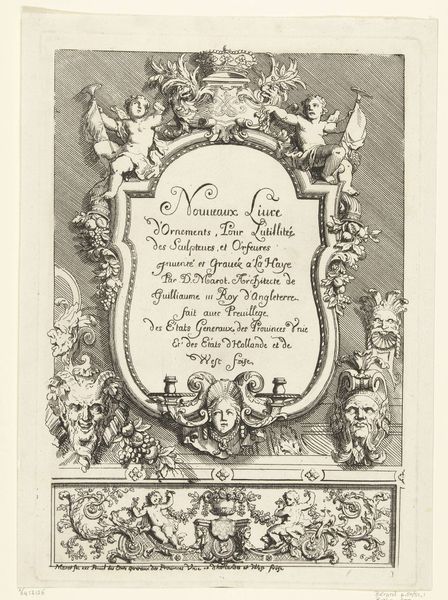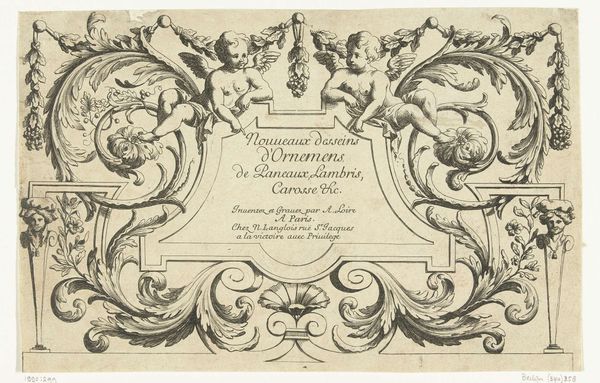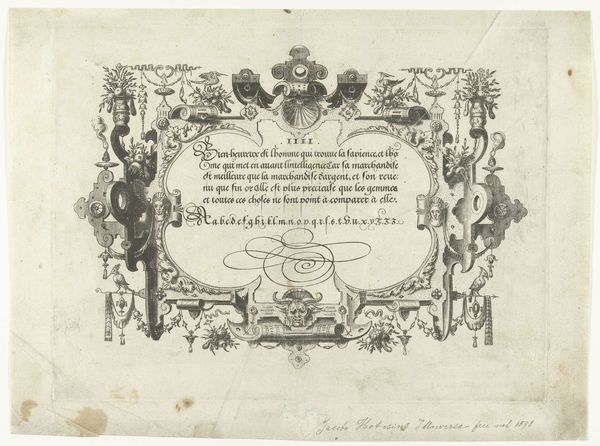
graphic-art, print, etching
#
graphic-art
# print
#
etching
Dimensions: 99 mm (height) x 169 mm (width) (plademaal)
Curator: Here we have Albert Flamen’s “Titelblad til 'Firbenede dyr',” or Title page for 'Quadruped Animals', created around 1660. It’s an etching. My initial impression is that it feels rather formal and heraldic, yet somehow also lively. Editor: Lively is a good word! Look at the intricate etching. It’s incredible the detail they achieved using what essentially boils down to incising lines into a plate and then pressing it onto paper. This was laborious, painstaking work. Curator: Absolutely, and in considering Flamen's work, we have to understand the rise of print culture during this period. The image, through prints like these, becomes more accessible, and the possibility of dissemination opens doors for both artists and their patrons. Editor: Precisely! Consider also the materiality here. Etching allowed for the creation of images, like this, that could then be mass-produced. The process itself changed how information and visual culture spread through society. What could only be owned by a few becomes something of a public domain. Curator: And in this specific image, we see not only an example of printmaking ingenuity but also the socio-political aspects of artistic patronage at work. The dedication text makes that quite clear; Flamen inscribes it “To Monsieur le Marquis…” Editor: A very particular Marquis at that! The inscription makes clear who bankrolled this project, whose interests were being catered to. Look at the ornamental frame too. Curator: Yes, it reinforces a sense of refined taste and nobility—natural specimens rendered within the framework of aristocracy. It brings together elements of the scientific study with those of courtly life, the dedication itself being an instrument for career advancement. Editor: It's an artifact deeply embedded in its social context. Examining this print through that lens of labor, materiality, and political patronage reveals much about 17th-century production and artistic ambition. It’s more than just ink on paper; it's a statement about social hierarchies and artistic aspiration. Curator: A fascinating meeting point of craft and status, for sure. One leaves understanding more about not only animal representation in the era but of the role of image-making and artists’ livelihoods in society at large.
Comments
No comments
Be the first to comment and join the conversation on the ultimate creative platform.
